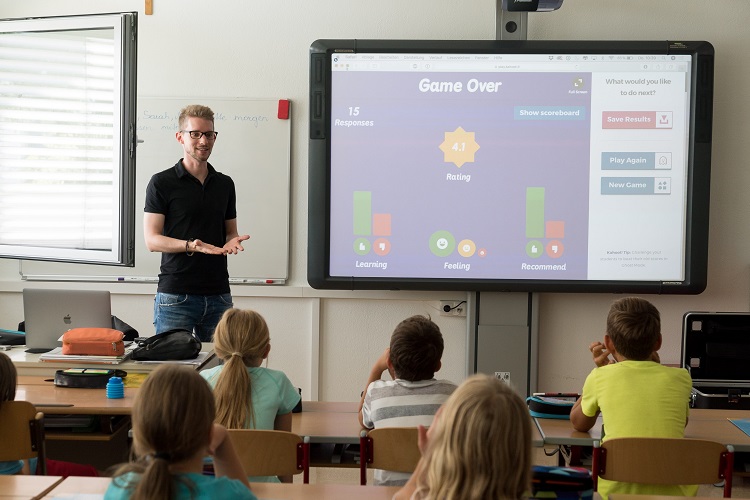 Teaching has always been a challenge because students, like people in general, can get distracted easily. But with technology continually advancing in recent years and more and more students owning smartphones, being a classroom teacher can easily feel like a battle for students’ attention. Walk into any classroom on any given day, and you’re likely to see a number of students staring into a smartphone screen, either indiscreetly (so they won’t get in trouble) or out in the open (because the teacher has been worn exhausted from fighting the battle each day).
Teaching has always been a challenge because students, like people in general, can get distracted easily. But with technology continually advancing in recent years and more and more students owning smartphones, being a classroom teacher can easily feel like a battle for students’ attention. Walk into any classroom on any given day, and you’re likely to see a number of students staring into a smartphone screen, either indiscreetly (so they won’t get in trouble) or out in the open (because the teacher has been worn exhausted from fighting the battle each day).
It’s easy to view smartphones as a deterrent to student learning, but what if it didn’t have to be that way? Students love their devices and get frustrated when teachers won’t allow use of their devices in class. But with students having this technology at their fingertips, perhaps there is a way students can use their devices in a way that helps them to be engaged in what’s going on in the classroom and support authentic learning at the same time.
Smart board quiz games, such as Kahoot, can give teachers and students an opportunity to create more engagement in the classroom. Here’s how.
Making Learning Fun
The teacher takes the traditional multiple-choice quiz format and using a quiz game projects the questions and answer choices on their smart board. Students can connect to the game using their smartphone and answer the questions through their device. The questions are often presented in a timed format and uses gamification to tap into students’ competitive natures to try to answer the questions correctly before anyone else.
This gamification of learning simulates a practical use of the learning students are expected to master. Instead of learning just for the sake of learning, students are learning in order to win a game, and this reinforces the learning in their minds.
Data and Formative Assessment
An added benefit on the teacher end is that many smart board quiz programs collect real-time data from the students as they’re playing. After students have finished the quiz, teachers can go back and look at which students missed a certain question and determine whether or not intervention is necessary for those students. Smart board quizzes make great formative assessments for this reason. The data collected can help drive the classroom instruction going forward, and of course, students will likely enjoy a reassessment through a smart board quiz after a period of reteaching.
An Opportunity for Student Ownership
Another great way to use smart board quizzes is to task students with creating their own. Assign students a subject or skill that they’re responsible for teaching the rest of the class, then have them create a smart board quiz to assess whether the class learned what they were supposed to. This helps to enlighten students to the challenges of designing learning experiences and helps them to think critically, which will be invaluable when applied to their own learning.
When it comes to smart board quiz programs, there are several to choose from. A few that teachers often recommend include Kahoot, Quizlet, Quizizz, and Nearpod, among others.
Smart board quizzes can help teachers fight the natural distractions students face with their technology and create an engaging experience for both learning and assessment of learning.






Hello,
I wanted to let you know that I really enjoyed your post. The way you described made so much sense, I’ve never heard it explained that way before. Check our website. Hope you would like to add us in this list.